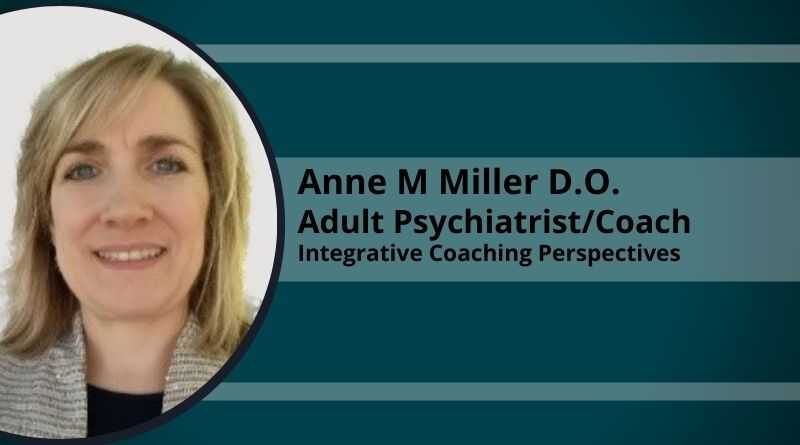Web-based Medical Care in the age of COVID – the Good, the Bad and the Ugly
By Anne M Miller D.O., Adult Psychiatrist/Coach, Integrative Coaching Perspectives
In the past 2.5 years, telemedicine saw a massive spike in use as COVID-19 became an entity that no one could ignore. Prior to this time frame, the concept of significant insurance companies paying for regular telemedicine visits was rare except in remote patient populations or those areas with limited access to physician sub-specialties. COVID created the necessity for insurance reimbursement of telemedicine appointments almost overnight.
The mental health field has always been more amenable to using telemedicine, more so than the rest of medicine, but generally this was still focused in areas where mental health providers were limited.
The mental health field has always been more amenable to using telemedicine, more so than the rest of medicine, but generally this was still focused in areas where mental health providers were limited. No one had considered it a viable option to address access to care issues. The benefits of telemedicine use have allowed better access to care, decreased the limitation of long commute times for patients, and helped limit the spread of COVID-19 to both physicians, staff, and patients during the intense spikes of the pandemic. Patients who are tech-savvy enjoy the flexibility of seeing their provider on a 20–30-minute work break rather than having to take more time off work.
As with all implementations of technology, there have been many drawbacks and complicating factors that have created another layer of complexity in delivering care. 1) Patients don’t always have access to a reliable computer system or have an unstable internet connection due to being rural or for other reasons. 2) The age of the patient can present a problem with their lack of ability or experience in using technology, obviously being more prominent in the older population. Since 34% of the US population is over the age of 50 and this age range is more likely to request medical care, it became a significant issue during the pandemic. As a provider, you can take half the session trying to get them connected to the technology and have much less time to address their clinical needs while still having the exact charting requirements. 3) As providers, we don’t have the patient’s undivided attention the same way we do in person. The younger generation attempts to multitask during their appointment time even though the amount of time spent with them is at most 20 minutes. Personally, I have been brought along on their shopping trips, picking up their kids, driving in a car (where they cannot understand why their connection is cutting in and out), attending another appointment at the same time as mine, as well as dealing with a lack of privacy at home when trying to discuss delicate medical and psychological issues. 4) Within the mental health field, working with someone who is psychotic (out of touch with reality) can have added difficulties. Talking to one’s doctor or therapist through a computer when paranoid can increase the risk of the patient thinking someone is listening in on the conversation or taping them, thus causing trust issues because of using technology.
Aside from the technology and time-based issues associated with telemedicine, there are other practical issues as well. 1) Obviously, as providers, we cannot check weight, blood pressure, or pulse, which can be important to know when prescribing or adjusting medications. 2) Telemedicine appointments also do not work when there needs to be a complete physical exam. 3) Another complicating factor is that insurance companies try to limit payment for telemedicine appointments and/or how many times a year patients can be seen using telemedicine. This might be a more reasonable request when dealing with physical illness but less reasonable when considering mental health. Being that access to care and providers is such an issue within mental health, one would think insurance would support tele psych outreach. 4) Depending on the individual insurance policy a patient has, they may not have coverage for telemedicine appointments, and if the appointment must be converted to a phone appointment because of technological difficulties, they may not pay for that either. So, Medicare, BCBS, Aetna, Cigna, and United Healthcare, in theory, all pay for telemedicine. But there are multiple policies offered within an insurance plan and not all pay for telemedicine services. Since the spikes in COVID cases have receded, there is also pressure on providers to revert back to more frequent office appointments driven again by payment from insurance companies.
While technology has increased our “reach” and kept healthcare providers safe during the COVID epidemic, it has not been without its own set of complications and limitations. And if telemedicine is to help extend its reach into lower socio-economic areas communities where health disparities are the greatest, technology, including stable Wi-Fi, will need to expand into areas where those with the greatest need have access to the same quality care as everyone else. Technology, like everything in life, has its strengths and weaknesses. We need to work towards making it strong and beneficial for everyone.
Anne M Miller D.O. is an integrative psychiatrist turned coach – helping physicians and professionals design their lives based on their unique personal vision. She can be reached through her LinkedIn address.

